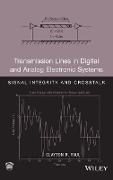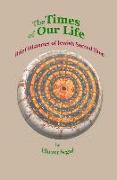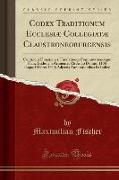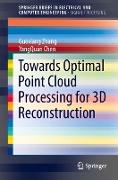- Start
- Transmission Lines in Digital and Analog Electronic Systems
Transmission Lines in Digital and Analog Electronic Systems
Angebote / Angebote:
A much-needed primer on all aspects of transmission lines for electric and computer engineering graduates
Most of today's electrical engineering and computer engineering graduates lack a critically important skill: the analysis of transmission lines. They need this basic knowledge in order to be able to design high-speed digital and high-frequency analog systems--and this problem will only get worse as the speeds and frequencies of these systems continue to increase. This important text is the remedy. It prepares readers for increasingly difficult design problems in today's ever-changing high-speed digital world, focusing on signal integrity and crosstalk.
Class-tested under the author's expert guidance at Mercer University, the book starts by reviewing the fundamental concepts of waves, wavelength, time delay, and electrical dimensions, as well as the bandwidth of digital signals and its relation to the pulse rise/fall times. It then explains two-conductor transmission lines and designing for signal integrity, addressing the time-domain analysis of those transmission lines and the corresponding analysis in the frequency domain. The terminal voltages and currents of lines with various source waveforms and resistive terminations are computed by hand via wave tracing. This gives considerable insight into the general behavior of transmission lines in terms of forward- and backward-traveling waves and their reflections. The effect of line losses including skin effect in the line conductors and dielectric losses in the surrounding dielectric are increasingly becoming critical, and their detrimental effects are discussed.
Next, the book repeats these topics for three-conductor lines in terms of the important detrimental effects of crosstalk between transmission lines, explaining the transmission-line equations for lossless lines, the important per-unit-length matrices of the inductance and capacitance of the lines, and the solution of three-conductor, lossless lines via mode decoupling. The final chapter concludes by investigating the effects of the line losses on the crosstalk of these three-conductor lines.
Each chapter concludes with numerous problems for the reader to practice his/her understanding of the material. An Appendix contains a brief tutorial on SPICE (PSPICE), an important computational tool that is used extensively throughout the book. The included CD features several computer programs used and described in this book for computing the per-unit-length parameter matrices and a subcircuit model for three-conductor lines, as well as two MATLAB programs for computing the Fourier components of a digital waveform and two versions of PSPICE.
This book is intended as a textbook for a senior/first-year graduate-level course in transmission lines in electrical engineering and computer engineering curricula. It is also essential for industry professionals as a compact review of transmission line fundamentals.
Lieferbar in ca. 10-20 Arbeitstagen




